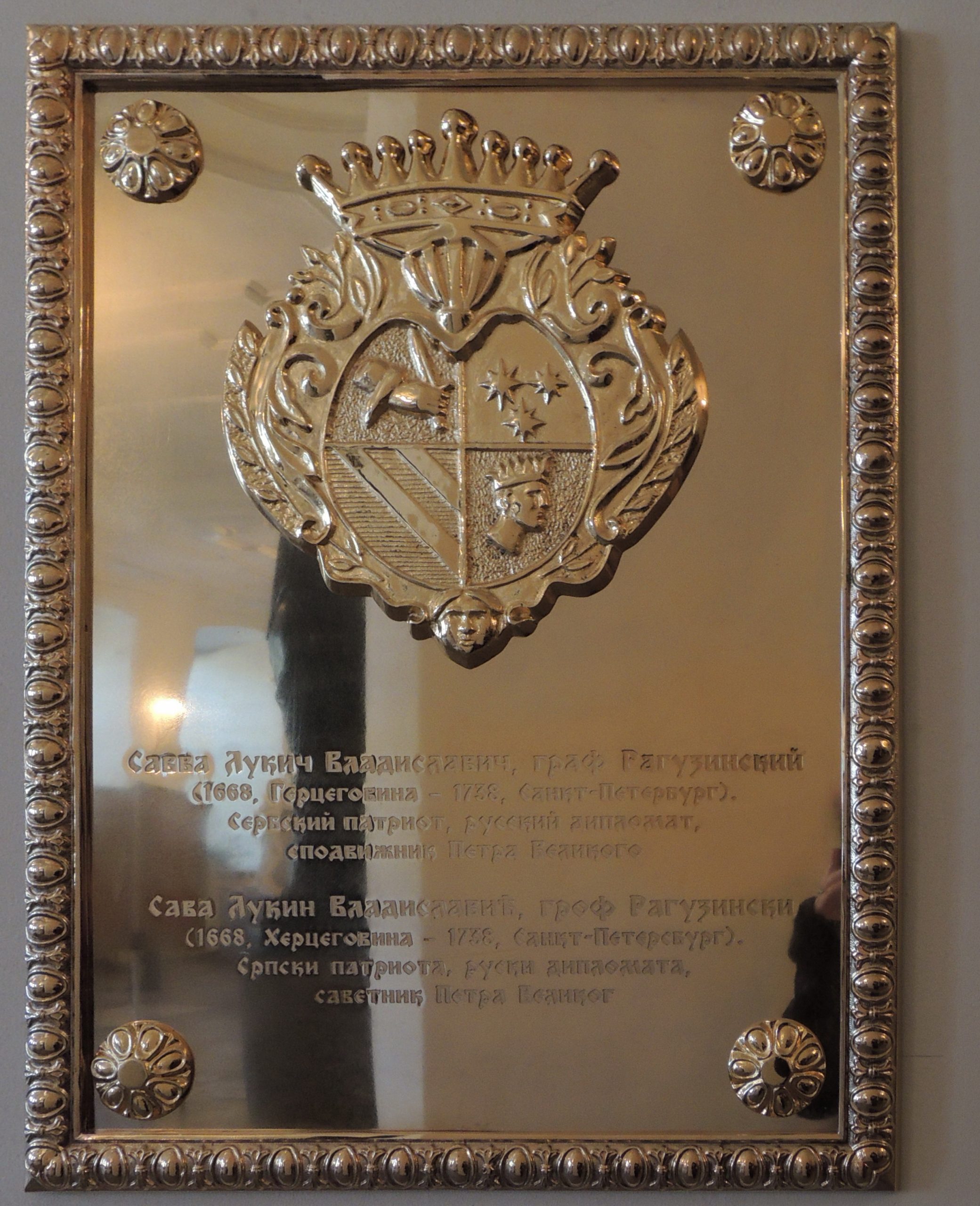The merchant from Ragusa, who was in the Russian diplomatic service, played a prominent role in the history of Russia
Karina Enfenjyan
Count Savva Lukich Vladislavich-Raguzinsky played a significant role in strengthening the positions of the Russian state on the international stage, developing the country’s economy, consolidating its trade and diplomatic ties with Europe, and contributing to the improvement of relations with the Slavic peoples of the Balkans. He was a successful negotiator, a talented diplomat, a true secret advisor, and a collaborator of Peter the Great.
A Serb by nationality, he was born on 16 January 1669 in the city of Herceg Novi near Ragusa (now Dubrovnik in Croatia) to the family of a descendant of the Bosnian princes Vladislavić. Trade, which he began to engage in in his youth, brought him one day to Constantinople, where he was able to demonstrate amazing diplomatic abilities, carrying out unofficial assignments of Prince Vasily Golitsyn and the ambassador to Turkey Yemelyan Ukraintsev. For several years, Raguzinsky was also a secret agent of Hetman Ivan Mazepa in Turkey.
In 1703, Raguzinsky visited Moscow for the first time, and Peter the Great, having heard about his commercial and diplomatic talents, granted him great privileges for free trade in Russia with the payment of duties on the same basis as Russian merchants.
Raguzinsky achieved a lot in the time allotted to him by fate.
An intelligent and efficient Serb, who spoke European and Oriental languages, had great connections in the Balkans and Turkey and had a special gift for winning people over, fit well into the court of the Russian Tsar in the most difficult period of Russian-Turkish relations. Based on the information that Raguzinsky received from insiders in Turkey, he was able to predict the Russo-Ottoman War, of which he warned the Chancellor of the Russian Empire, Gavriil Golovkin, in his letter on 31 December 1708.

Church of the Alexander Nevsky Lavra
For faithful and diligent service, Peter the Great granted Raguzinsky a “court” on Pokrovka Street (previously owned by boyar V. F. Naryshkin) in 1708, promoted him to the rank of court councillor, and granted him the Russian nobility and the title of the Illyrian Count.
Having settled in Moscow, Raguzinsky did not forget about his roots and dreamed of seeing the peoples of the Balkans independent. In 1711, as a representative of Russia in Montenegro and Moldova, the count took an active part in the Prut River Campaign, the goal of which was to liberate the Slavs of the Balkan Peninsula from the Turkish yoke. It was Raguzinsky who advised Peter the Great to appeal to the Christian peoples of the Balkans to support Russia in the war against Turkey. And he even translated into Russian the work of the Dalmatian Benedictine Mavro Orbini Kingdom of the Slavs, who substantiated the idea of the ethnic and linguistic kinship of the Slavic peoples.
In subsequent years, the count continued to successfully combine commercial and diplomatic activities. In 1716–1722 he travelled to Italy and conducted negotiations in Venice and Rome as a representative of Peter the Great. On behalf of the Tsar, he ordered and organised the delivery to Russia of a large number of magnificent works of art, including marble sculptures for the Summer Garden in Saint Petersburg; hired Italian painters, stonemasons, and shipwrights to serve in Russia; helped organise the training of Russian painters and sculptors from Italian masters. He even managed to obtain permission from Pope Clement XI to export from Italy the statue of the Venus Tauride, purchased by Peter’s agent Y. I. Kologrivov for the Kunstkamera. Today, this unique statue is in the Hermitage in Saint Petersburg.
Interestingly, it was Raguzinsky who presented Peter the Great with the extraordinary gift of Ibrahim Hannibal, an Ethiopian man destined to become the great-grandfather of Alexander Pushkin.
The outstanding diplomatic abilities of Count Raguzinsky were revealed during a responsible mission to the Qing Empire: having headed the Russian embassy in China in 1725, the count concluded the Burin Treaty in August 1727, according to which both parties recognised the existing Russian-Chinese borders. In October of the same year, these borders were fixed by the Treaty of Kyakhta, which, in addition, legally formalised the existence of the Russian spiritual mission in Beijing.
The town of Troitskosavsk (now Kyakhta in Buryatia), founded by Raguzinsky, remained the main point of trade between Russia and China until the second half of the 19th century.
Upon returning to Saint Petersburg, Raguzinsky created detailed reports about China for the government, and in 1731 he wrote the book Secret Information on the Strength and Situation of the Chinese State.
For his service to the Russian state, the count was awarded the orders of the Holy Apostle Andrew the First-Called and Saint Alexander Nevsky.
Sava Vladislavich-Raguzinsky completed his life journey on 17 June 1738. He was buried in the Annunciation Church of the Alexander Nevsky Lavra.




